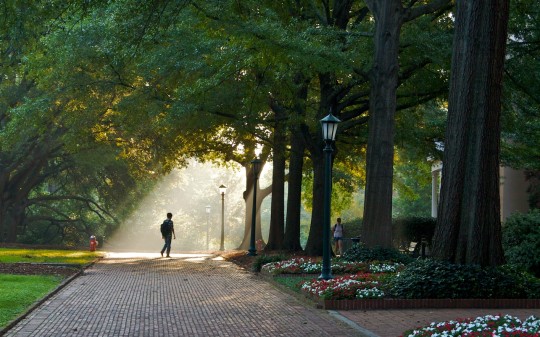By PHILLIP CEASE

Or is there some other explanation for constant tuition increases?
As Benjamin Franklin didn’t quite say, “In this world nothing can be said to be certain, except death and taxes and university tuition increases.”
How much has university tuition gone up since 2006? According to data from the Commission on Higher Education instate tuition at Clemson, the University of South Carolina and the College of Charleston has gone up over 48 percent in the last 10 years.
Without fail, when a university board votes to raise tuition, the stated reason is: Money from the state has decreased, so the losses have to be offset. The idea, of course, is to blame it on the legislature, and most people are probably okay with blaming the legislature.
But hold on.
While money from the General Fund – one of three pools of money that makes up the state’s budget – has indeed declined, the overall funding for these three institutions has jumped over 58 percent from FY 2006-2007 to FY 2016-2017. This does not include fee increases, which vary from course to course.
Further, enrollment has increased almost 26 percent over roughly the same time.
If enrollment is growing and total funding is growing, then why do tuition and fees continue to rise as well?
One reason: the constant increases of some university administrators’ salaries. (Of the top paid 250 state employees all but 33 are university employees.) The president of USC, Harris Pastides, had his total salary raised to just under $1 million last month.

Another reason: the fact that state institution bonds (a class of general obligation bonds) for universities is directly tied to tuition revenue. allows universities to issue revenue bonds. Those debt service payments can equal up to 90 percent of tuition revenue. Indeed, up to 90 percent of student tuition revenue can go to bond service. From 2007 to 2015 debt service for state institution bonds at Clemson and USC has increased by over 58 percent. At Clemson alone, this number jumped almost 90 percent.
Another class of general obligation bonds that the universities are able to use are known as state research university infrastructure bonds. According to the 2015 Annual State Debt Report these bonds can be used to “advance economic development and create a knowledge-based economy, thereby increasing job opportunities, or to facilitate and increase externally funded research at the research universities.” While payment of these bonds is not tied to tuition, it’s worth noting the state is issuing bonds to create a “knowledge-based economy” for job opportunities and to increase research.
So if state funding “cuts” aren’t driving tuition hikes, what is? Drive around Columbia, for example, and you’ll notice a new law school building, a new business school building, and various other new USC-related constructions, to say nothing of a coming new medical school on Bull Street.
The answer to the tuition hike mystery, it would seem, is the old reliable one: Universities spend too much on buildings.
Phillip Cease is director of research at the South Carolina Policy Council.
